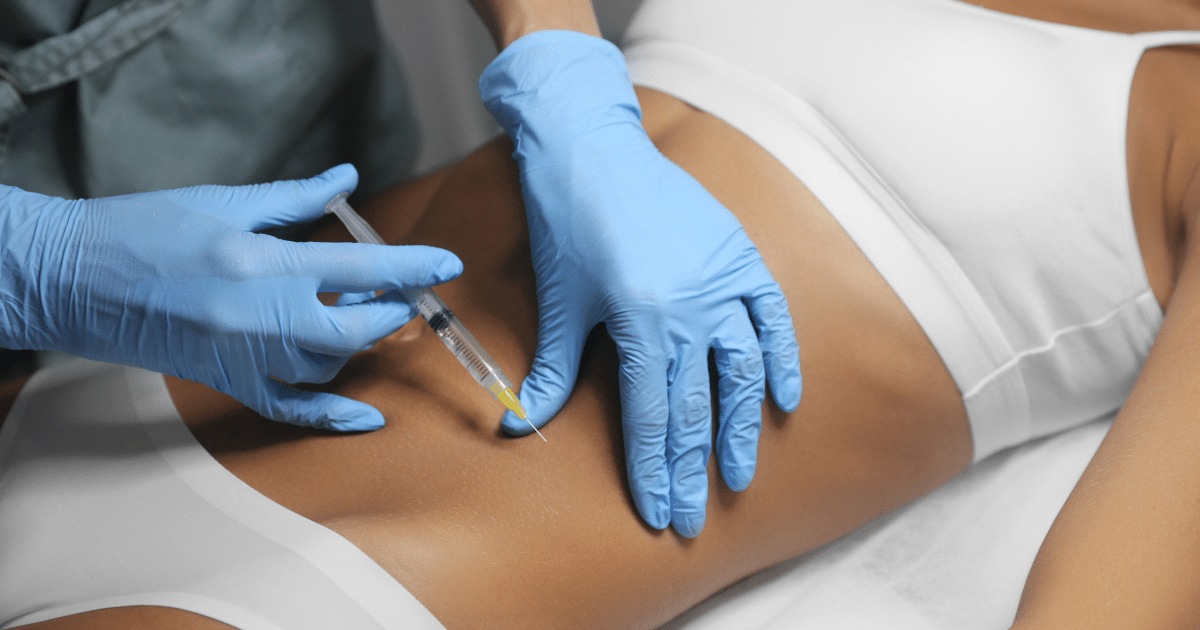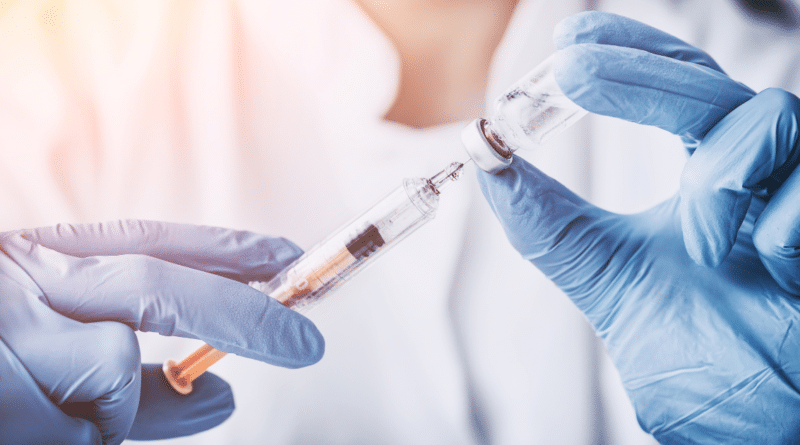HRT vs. TRT: Decoding the Hormonal Puzzle for Your Health
Have you ever felt like your body’s not quite in sync? Maybe it’s a case of endless fatigue, mood swings that rival a rollercoaster, or maybe your get-up-and-go just got up and left. Have you ever thought about HRT vs. TRT, wondered what’s the difference between HRT and TRT, or what they can do for you?
If you’ve asked yourself this, you’re not alone. These could be signs of hormonal imbalance, something many women and men face but few tackle head-on. Clearing the fog around Hormone Replacement Therapy (HRT) and Testosterone Replacement Therapy (TRT) might just be the lifeline your well-being needs.
Here’s something to chew on: while HRT treatment is usually associated with women marching through menopause, men can also wave its banner when tackling testosterone troubles. This blog post peels back the layers of HRT vs TRT — delivering straight-up facts without fancy jargon.
We’ll explore how each therapy benefits different folks, what to consider before jumping aboard either train, and debunk some tall tales along the way. Ready for answers? Let’s decode this hormonal puzzle for your health.
Because feeling great shouldn’t be so mysterious!

Disclaimer: This article is for informational purposes only and is not meant to treat or diagnose any condition. It is recommended that you speak with your doctor if you feel you suffer from hormone issues and want to use TRT or HRT to improve your current hormone levels and overall health. Hormone replacement therapy can help reverse any changes in these hormone levels.
Key Takeaways
- HRT helps with hormonal imbalances in women, especially during menopause. It can ease symptoms like hot flashes and protect bones.
- TRT boosts low testosterone in men, improving energy, muscles, mood, and sexual health.
- Both HRT and TRT have risks like blood clots; it’s important to talk with a doctor before starting.
- Bioidentical hormones match the body’s own and might have fewer side effects than synthetic ones.
- Personal health factors like age and current conditions decide if HRT or TRT is right for someone.
Understanding HRT vs. TRT
HRT, or Hormone Replacement Therapy, is a treatment that replenishes hormone levels in men and women to alleviate symptoms of hormone deficiency. On the other hand, TRT, or Testosterone Replacement Therapy, focuses specifically on increasing testosterone levels in men suffering from low hormone levels.
HRT: Hormone Replacement Therapy
Hormone Replacement Therapy replenishes hormones that your body isn’t making enough of, like estrogen and progesterone. It’s a lifesaver for women going through menopause who are grappling with hot flashes, mood swings, and weight gain.
Related Article: Navigating TRT Costs — Does Insurance Cover TRT Therapy?
But it’s not just about easing those tough menopausal symptoms; HRT works to maintain bone density and ward off osteoporosis, too.

Men can also turn to HRT when their testosterone levels dip lower than normal, as the type of HRT may vary between sexes. This type of hormone therapy and form of HRT aims at restoring balance and improving quality of life. Whether you’re dealing with libido issues or trying to keep muscle mass from slipping away, getting your hormone levels right is key.
Always work closely with a healthcare provider to figure out the best treatment plan tailored just for you.
TRT: Testosterone Replacement Therapy
TRT stands for Testosterone Replacement Therapy. It’s a treatment that helps men with low testosterone levels feel better. Low testosterone can make you tired, lower your sex drive, and cause other health problems. Male testosterone levels begin to decline around the age of 30. Some of the symptoms of low testosterone include men finding their lean muscle mass slowly disappearing and their body fat increasing simultaneously.
TRT treatment for men works by giving your body the testosterone it needs.
Doctors use TRT hormone treatments to help men who have a condition called hypogonadism. This is when the body doesn’t make enough testosterone on its own, and the male hormone production starts taking a nosedive. With testosterone therapy, some men see improvements in their energy levels, mood, and muscle mass.
Related Article: Is Your Natural Testosterone Level Low? Here’s How to Fix It
It can even make bones stronger and help manage symptoms of aging like cognitive decline. But remember, TRT is not just about boosting sex drive; it supports overall male health when done correctly.
Differences between HRT vs. TRT
Understanding the nuances between Hormone Replacement Therapy (HRT) and Testosterone Replacement Therapy (TRT) is a critical step for those keen on managing hormonal imbalances with precision. Let’s delve into the specifics of these interventions and highlight their differences.
Below is a chart looking at HRT vs. TRT:
| HRT (Hormone Replacement Therapy) | TRT (Testosterone Replacement Therapy) |
|---|---|
| Primarily used to treat hormonal deficiencies in women, especially during menopause | Focuses on replenishing testosterone levels, specifically in men |
| Tackles a range of symptoms from hot flashes to bone density loss | Improves libido, muscle mass, mood, cognition, and can affect erythropoiesis |
| Can include various hormones like estrogen, progesterone, and sometimes testosterone | Strictly pertains to increasing testosterone levels |
| Available in pills, patches, gels, and creams | Administered through injections, gels, patches, or pellets |
| May help in reducing the risk of osteoporosis and heart disease in women | Benefits bone density and can improve the quality of life in men with low testosterone levels |
| Risks include potential links to breast cancer and blood clots | Can increase the risk of certain health issues like sleep apnea and blood clots |
| Bioidentical hormones are increasingly preferred for their similarity to the body’s natural hormones | Some prefer bioidentical testosterone for its natural molecular structure |
| The user’s age, health status, and symptoms dictate the appropriateness of HRT | Typically considered for men over 30 with clinically low testosterone levels |
As we dissect these pivotal treatments, it’s evident they cater to distinctive needs aligned with gender-specific hormonal requirements. Hormones play a significant role, and whether it’s HRT or TRT, the goal remains consistent — to restore balance and enhance quality of life. Remember, consulting with a healthcare provider is paramount when choosing the path that’s right for you.
How HRT and TRT Benefit Men and Women
HRT offers women relief from menopausal symptoms, such as hot flashes and mood fluctuations, while also reducing the risk of osteoporosis. On the other hand, TRT helps men increase muscle mass, improve energy levels, and address symptoms related to low testosterone levels, such as erectile dysfunction.
Both therapies aim to restore hormonal balance for better overall health and well-being.
HRT and its benefits for women
HRT helps women with hormonal imbalances, such as during menopause. It offers various benefits:
1. Alleviates hot flashes and night sweats, improving comfort throughout the day and sleep quality at night.
2. Supports bone health by reducing the risk of osteoporosis, maintaining bone density, and strength.
3. Manages vaginal dryness, enhancing comfort and intimacy.
4. Helps regulate mood swings and emotional fluctuations, promoting mental well-being.
5. Reduces the risk of heart disease by maintaining healthy cholesterol levels.
6. Improves skin elasticity and hydration, countering aging effects.
7. Provides relief from symptoms like fatigue and insomnia, enhancing daily energy levels.
TRT and its benefits for men
Testosterone Replacement Therapy (TRT) is essential for men with low levels of testosterone. It can help improve libido and sexual function. TRT also enhances bone density, muscle mass, and body composition.
Choosing the Right Treatment: TRT vs. HRT
Factors to consider when choosing between HRT and TRT include age, symptoms, and overall health. Consulting with a healthcare provider is essential in determining the best course of treatment for hormone deficiencies.
Factors to consider when looking to fix hormone imbalances
Below is a list of some major factors to consider before jumping into HRT or TRT:
1. Your current health status, including any existing medical conditions and medications you are taking.
2. Consult with a healthcare provider experienced in hormone replacement therapy to assess your individual needs.
3. Age and gender play a role in determining the most suitable treatment approach, considering the natural hormonal changes that occur over time.
4. Evaluate the potential benefits and risks, such as improved quality of life versus possible side effects or complications.
5. Bioidentical hormone options should be explored for their compatibility with your body’s natural hormone composition.
6. Discuss your lifestyle and activity levels to determine how treatments may impact your daily routines and overall well-being.
7. Consider the cost and accessibility of different treatments to ensure they align with your practical needs and resources.
Remember, each person’s hormonal balance is unique, so it’s crucial to consider these factors carefully before deciding on a course of treatment.
Consulting with a healthcare provider on the types of hormone replacement therapy for men and women
It’s crucial to consult with a healthcare provider when considering hormone replacement therapy (HRT) or testosterone replacement therapy (TRT). They will assess your hormonal imbalances and overall health, guiding you toward the most suitable treatment. They will have you get bloodwork done or use an at-home testosterone test.

Additionally, they can help monitor your hormone levels and address any potential risks associated with HRT or TRT. Seeking professional guidance ensures that you make informed decisions to promote your well-being, taking into account the benefits and risks of these treatments for menopausal women as well as men experiencing low testosterone levels.
Related Article: Beyond the Numbers — Interpreting Your Testosterone Test Results
Remember, consulting with a healthcare provider is essential because they can provide personalized advice based on your specific needs and medical history when it comes to considering HRT vs. TRT.
The importance of bioidentical hormones
Bioidentical hormones are crucial for maintaining hormonal balance in the body. They are derived from plant estrogens and are chemically identical to those produced by the human body. This similarity allows bioidentical hormones to be easily recognized and processed, reducing the risk of side effects associated with synthetic hormones.
Research suggests that bioidentical hormones may offer benefits such as improved bone health, relief from menopausal symptoms, and reduced risk of heart disease.
Balancing hormones with bioidentical hormone replacement therapy (BHRT) can aid in addressing symptoms related to hormone deficiency without unwanted side effects. BHRT has shown potential in reducing hot flashes, night sweats, mood swings, and improving overall well-being.
The Amazing Meds approach and treatment plan to improve hormone levels using TRT and HRT
The Amazing Meds approach to HRT and TRT emphasizes personalized treatment plans tailored to individual hormone imbalances. By considering factors such as age, symptoms, and medical history, they aim to optimize hormone levels for improved overall well-being.
Their focus on bioidentical hormones ensures that the treatments closely mimic the body’s natural hormones, potentially minimizing risks associated with synthetic alternatives.
Their approach recognizes the importance of regular monitoring and adjustments based on each patient’s response, maximizing the benefits while minimizing potential side effects. Through this comprehensive strategy, The Amazing Meds seeks to provide safe and effective solutions for addressing hormonal imbalances in both men and women alike.
It’s Important to Understand the Difference Between TRT and HRT for Men and Women
To wrap this up, understanding the differences between HRT and TRT is essential for addressing hormonal imbalances and promoting overall health. Both treatments offer benefits but also carry risks that individuals should consider. Hopefully this answers the questions you may have had about HRT vs. TRT.
Summarizing key points, HRT is preferred for women, while TRT is preferred for men to restore hormone balance. Highlighting practicality and efficiency, consulting with a healthcare provider becomes crucial in choosing the right treatment.
Related Article: Top 5 Supplements to Help Improve Hormonal Imbalances
Engaging with direct questions or calls to action, what steps will you take to ensure your hormonal health? Stressing the importance and impact of these strategies, applying them can lead to significant improvements in well-being.
Offering additional resources or guidance provides opportunities for continued learning beyond this article. Closing with a motivational statement: Take charge of your health by decoding the hormonal puzzle effectively! And if you want some extra reading, I highly recommend this book that goes into even more details about HRT vs. TRT.
FAQs
Hormone Replacement Therapy (HRT) helps both men and women balance various hormones, including sex hormone levels or thyroid hormone. Testosterone Replacement Therapy (TRT) focuses only on increasing a man’s testosterone level when it begins to decline.
Typically, no — TRT is mainly for men with low testosterone levels due to conditions like andropause or other hormone deficiencies. Women may need different kinds of HRT to address their hormonal balance.
A man might consider HRT if he has more than just a testosterone deficiency — for example, if his growth hormone or thyroid hormone levels are also not balanced. Sometimes, doctors suggest combination therapy that includes testosterone as well.
Men’s bodies usually produce enough testosterone until they reach their 30s; after that, their levels can start to go down — a condition we often call andropause.
Yes, any form of hormone replacement therapy can have side effects — everyone reacts differently! It’s key to talk with your doctor about the benefits of HRT and weigh them against possible risks.
Deciding whether HRT is right for you will depend on many factors, like your specific symptoms of hormonal imbalance and overall health needs — the best step is to consult a healthcare professional who can analyze your situation thoroughly.


*Disclosure: This article may contain affiliate links or ads, which means we earn a small commission at no extra cost to you if you make a purchase through these links. These commissions help support the operation and maintenance of our website, allowing us to continue producing free valuable content. Your support is genuinely appreciated, whether you choose to use our links or not. Thank you for being a part of our community and enjoying our content.
PLEASE CONSIDER SHARING THIS ON YOUR SOCIAL MEDIA TO HELP OTHERS LEARN MORE ABOUT THIS TOPIC. SIMPLY CLICK BELOW!

